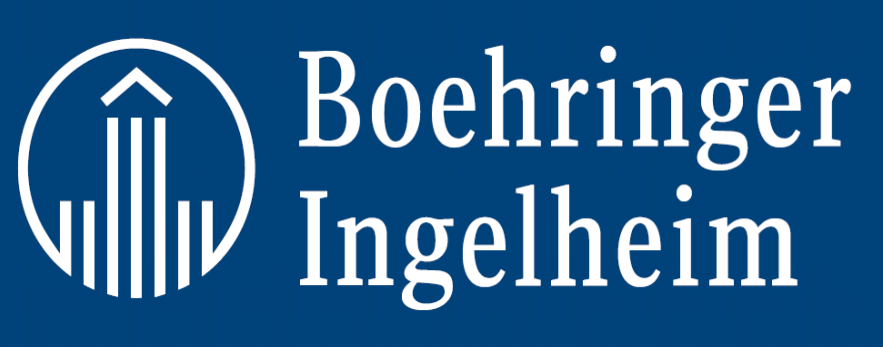Boehringer Ingelheim Pharmaceuticals, Inc., recently presented post-hoc analyses from the Phase III INPULSIS™ clinical trials at the American College of Chest Physicians Annual Meeting (CHEST 2015) in Montreal, Canada. Results from the first analysis revealed that treatment for Idiopathic Pulmonary Fibrosis (IPF) with OFEV has comparable and stable effects on disease progression (annual decline in the rate of forced vital capacity [FVC]) and the extent of time to the first acute exacerbation — irrespective of whether IPF patients enrolled in the clinical studies in the United States or worldwide. OFEV (nintedanib) is a small molecule tyrosine kinase inhibitor approved for the treatment of IPF.
“In a rare lung disease like IPF, which has unique characteristics and affects people around the world, it is critical to help pulmonologists make informed treatment decisions by understanding the effectiveness of OFEV in these different patient populations,” said Dr. John Huggins, Associate Professor Department of Medicine, Medical University of South Carolina, in a press release. “This new analysis showed that OFEV is comparably effective in people with IPF regardless of where they were enrolled in the trial.”
Results from the second analysis demonstrated similar efficacy with treatment with OFEV on decelerating IPF progression, irrespective of the existence of widespread lung scarring on imaging assessments at time of clinical diagnosis.
A third analysis assessed the St. George’s Respiratory Questionnaire (SGRQ) as a health-related quality of life measure among IPF patients (abstract 722A). The assessment tool was designed to evaluate the health status of people with clinical diagnosis of airway obstructions conditions, including asthma and chronic obstructive pulmonary disease (COPD).
Post-hoc Analysis of Combined U.S. and non-U.S. Patients
Results from this first analysis (trials NCT01335464 and NCT01335477; abstract 394A), which compared the adjusted decline in the annual rate of FVC and the extent of time to first acute exacerbation among United States and non-United States IPF patients, showed that the effect of treatment with OFEV was comparable irrespective of where IPF patients were enrolled in the clinical trial. Specifically, the results revealed that the decline in the FVC annual rate in U.S. IPF patients was of −94.7 mL per year with OFEV treatment and of −242.5 mL per year with placebo treatment while in the other IPF patient group the results were of −117.0 mL per year with OFEV treatment and of −220.0 mL per year with the placebo treatment.
One hundred sixty IPF patients (98 for OFEV treatment and 62 for the placebo treatment) were enrolled from United States clinical trial sites, and 901 IPF patients (540 for OFEV treatment and 361 for the placebo treatment) were enrolled in clinical trials sites internationally. Adverse events were described in 100% and 98.4% of the U.S. IPF patient group, and 94.6% and 88.1% of non-U.S. IPF patients in the OFEV and placebo treatment groups, correspondingly. Results revealed that among U.S. IPF patients, the hazard ratio for time to first acute exacerbation was 0.37, while among the non-U.S. IPF patients it was 0.68. Both results supported the efficacy of OFEV treatment.
“At Boehringer Ingelheim, we strive to advance the understanding of IPF,” said Danny McBryan, MD, vice president, Clinical Development and Medical Affairs, Respiratory, Boehringer Ingelheim Pharmaceuticals, said in a press release. “Significant achievements have been made in the treatment of IPF, and we are committed to ongoing research that helps healthcare professionals, patients and their caregivers make the best decisions to treat this devastating disease.”
Post-hoc Combined Analysis With or Without Honeycombing
Results for this second analysis (trials NCT01335464 and NCT01335477; abstract 361A) evaluated the effect of treatment with OFEV on adjusted decline in the FVC annual rate irrespective of honeycombing observed in the lungs from high-resolution CT scans when IPF patients enrolled in the clinical trials. In total, 567 IPF patients (326 for the OFEV treatment and 241 for the placebo treatment) had honeycombing at baseline, while 494 did not (312 for the OFEV treatment and 182 for the placebo treatment).
Results also revealed a stable effect of OFEV in IPF patients, regardless the presence of honeycombing. Specifically, the results revealed that in those IPF patients with honeycombing, the adjusted decline in the FVC annual rate was of −117.8 mL per year with OFEV treatment and of −212.8 mL per year with the placebo treatment. In IPF patients without honeycombing, the adjusted decline in the FVC annual rate was of −109.3 mL per year with OFEV treatment and of −237.2 mL per year with placebo treatment.
IPF is a chronic, progressive, severely debilitating and ultimately lethal lung disease for which there are limited treatment options. IPF affects between 14 and 43 people per 100,000 worldwide. The disease is characterized by progressive scarring of lung tissue and loss of lung function over time. OFEV was approved by the U.S. Food and Drug Administration in 2014 as a treatment for IPF (as was Esbriet, by Roche) and continues to reveal efficacy in treating the disease in continuation studies such as these, giving patients a much-needed therapeutic option.

